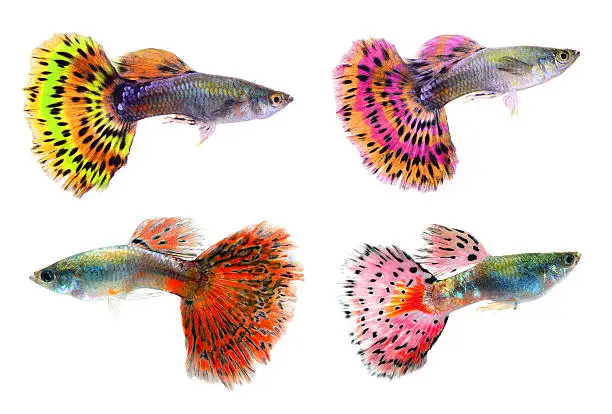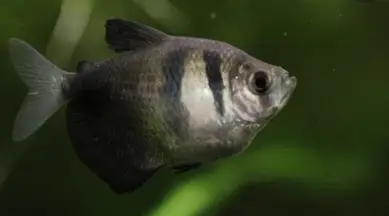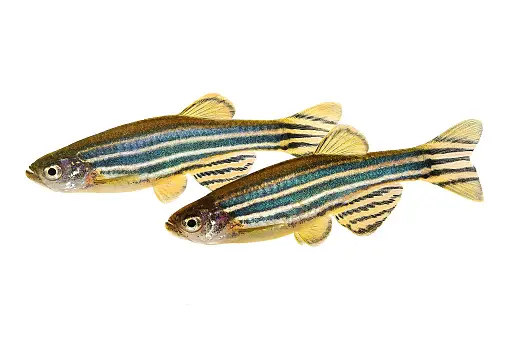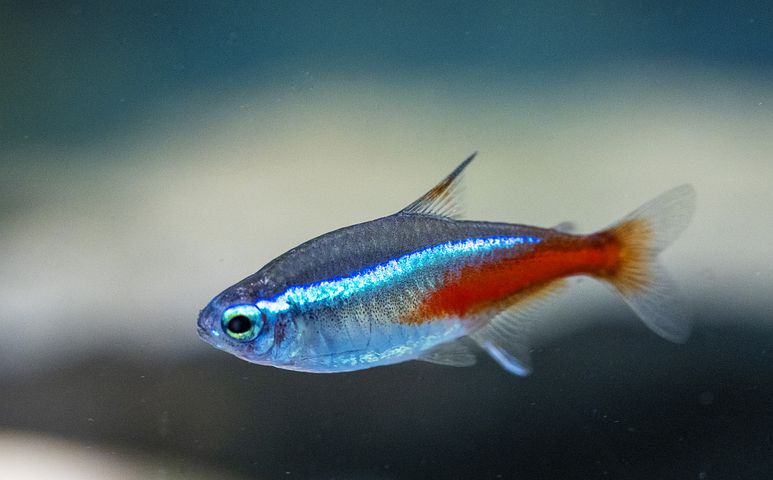Are you thinking about getting a pet fish? If you are thinking about getting a pet fish, it can be quite a confusing experience. You can easily get lost in all the information out there that just gets you confused. What are the best tropical fish for beginners? This is probably one of the most common questions people ask about getting a pet fish.
In this article, I will share with you my 15 favorite tropical fish for beginners. So you won’t end up with a bunch of dead fish lying around your home. And you will end up with a beautiful and unique fish that you have spent time and money on.
If you want to know which one of these tropical pet fish is the best one for you, then read on.
As a beginner, you want to pick out the tropical fish that will make your home aquarium thrive and the ones that will give you the best chance of success. Before I share the best pet fish list, below are the top 7 critical questions you should consider to guide you to the pet fish that will match your personality, budget, and home.
In this article
1. Do you have a tank already, and if so, how big is it?
The answer is that you can get started with a smaller aquarium. If you are new to fish keeping, you can buy a small aquarium that is big enough for the fish you want to keep. The best way to start is to get some small fish. They can be very cheap to buy and easy to care for.
If you have a large tank, it will be expensive to heat it. You will need to buy a heater, and it will be costly. It is easier to start with a small tank.
2. Are you interested in marine or freshwater species?
Tropical freshwater fish are generally less expensive to buy. The majority of tropical freshwater fish are captive-bred in fish farms. Freshwater is the better route as there are a lot of smaller fish species than tropical marine fish. You can house more tropical freshwater fish ‘per gallon than other types of fish. Tropical freshwater aquariums require less maintenance – generally once every 2 or 4 weeks.
Tropical marine fish are the most colorful and brightest of all fish types. Saltwater aquariums can also house corals and other invertebrate life, which are also very colorful. Shrimps, crabs, tubeworms, nudibranchs, and sea slugs can all be kept with compatible marine fish. Tropical marine aquariums require more equipment to keep everything happy and healthy. Many fish are caught from the wild and imported; therefore, they have a massive transition to get to your tank.
3. Do you want to go the cheap way and get a basic starter kit, or do you want to invest in a top-of-the-line fish tank with every feature?

Which one is better? To build your aquarium or to buy an aquarium kit? In comparison, building your aquarium is cheaper. You’ll be able to save more money and have the opportunity to utilize the materials that you have.
The downside of building your aquarium is that you have to spend time and be very careful in handling and choosing building materials. You have to be sure that you’re using the correct tools for the job. You also have to take the time to ensure that all the materials are clean and free of potential contamination components.
4. Do you want a tank that can be moved from room to room?
Fish tanks come in all shapes and sizes, including tabletop tanks, small fish tanks, large aquariums, and community tanks. If you want to start with small fish species, you should choose a smaller fish tank. This way, you can keep an eye on your fish, and it will be easier for you to see any problems that may arise. You will be able to provide better care for your fish and make sure that they receive the best conditions.
You will also have to consider the amount of space you have to keep the tank. If you have limited room, you will want to buy a smaller tank.
A portable tank from one place to another is an excellent choice if moving to a new home. Moving a large aquarium will be expensive and require a lot of effort and time.
5. What kind of lighting do you like? Do you want to use natural sunlight?
Aquarium lighting is essential because the light must illuminate fish to see, the tank to be attractive, and plants to grow. There are many things to consider when choosing a light, and you should select the fixture that will be right for your aquarium, your space, and your budget. Fish and Plant Needs Fish and plants have specific light needs. Some fish inhabit open water in rivers, streams, and lakes, where the light is bright most of the day. The depth of their habitat determines the type of light needed by many fish. Others prefer to live in open water, where the light is bright and constant throughout the day. For some plants, the amount of light they need is also related to their depth in the water.
6. Do you want to purchase the fish as a single species or do you want to mix and match?
You can have multiple species of fish in the same tank. However, you should not mix incompatible species. Before you mix fish from different species, you will need to research them and make sure they are compatible.
However, before you decide to put two fish species together, you need to make sure that they have similar dietary requirements, they are all getting a fair share of the food, and do not overfeed them. Fish that have different nutritional requirements must be monitored to avoid problems.
7. Do you want a planted aquarium?
Planted tanks are more efficient in creating a tropical aquarium environment than conventional aquariums. They’re less work to maintain, but proper planning is required for adequate tank dimension, lighting, substrate, fertilizers, and choice of plants, fish, and other things that might come into play.
Top 15 Tropical Fish for Beginners
Here is my list of the best tropical fish for beginners:
1. Swordtail

At a price of just $5, this highly sought-after freshwater fish is a crowd-pleaser. They are so easy to care for and can be found in a wide range of colors and patterns. As they are amiable to other members of their species, they do well in community environments. But, on their own, they tend to be territorial so they’re great as a single fish in a small aquarium. They can grow up to around four inches long, so they need to be housed in about twenty gallons of water. They have low requirements on the water conditions they need to thrive. Commercially processed foods will suit their omnivorous diet.
2. Fancy Guppy

If you’re looking to upgrade your aquarium with colorful livebearers, there are several options. Selectively bred fancy guppies have been bred to produce a variety of stunning, bright colors, patterns, and fin shapes and sizes.
They stay small, grow to around 2 inches in length, and are famous for breeding. So they’re best kept in small groups of 5 males or one male per three to four females. A 5-gallon tank is enough, but a 10 gallon would be easier to manage. Guppies enjoy live plants and tropical water parameters.
3. Cory Catfish

Most Cory Catfish are relatively easy to care for. They’re hardy and not very large, making them an excellent choice for beginners and experienced hobbyists alike. Their appearance can vary dramatically, with some species coming in shades of white to make them look like they’re shimmering under the light. They can come in various colors ranging from shimmering iridescent white to dark black.
Although, a 20 to 30-gallon tank is preferred for this species. These catfish need a lush environment filled with plants and decorations where they thrive in warmer waters between 70 and 80 degrees Fahrenheit. The optimal pH balance of the water should between 2.0 and 3.0.
4. Firemouth Cichlids

Commonly kept as schooling fish for their vibrant colors, Firemouth cichlids will also grow about 6 inches long and are very social and friendly. To maximize happiness, you should keep the tank between 21-25 degrees Celsius, and the water should contain a fine gravel bottom. They enjoy digging and moving rocks; therefore, make sure there is a safe with secured decor. They are omnivores and aren’t particularly fussy about their diet. Commonly sold foods like Ocean Plankton, Flake Food, and Cichlid Pellets can be given to them.
5. Black-skirt Tetra

The Black-skirt tetra should be kept in groups of no less than six and preferably no more than twenty. But they are super-easy to care for and require just regular flake food and maybe a few treats here and there. They’re docile fish that grow to about three inches across and need lots of room for swimming in the top third of the water column. If you’re planning on keeping large fish in your aquarium, you’ll want to look into these. They’re great for larger fish like Angelfish and Gouramis.
6. Zebra Danio

These beauties belong to the Cyrindae family and are named after their five metallic blue stripes running down their small torpedo-shaped bodies to the caudal fin. When housed in a shoal of at least 5 in a 15-gallon aquarium, zebra danios are very active and playful fish. They are fun additions to any small tank.
7. Oscars

1-2-inch baby fish tend to grow to monumental sizes of 12-14 inches in a brief period. Optimally, they require a 70-100-gallon tank with deep gravel bottoms and plenty of large, heavy rocks. You will need to perform regular water changes of around 25% each week to remove the excess waste and leftover food.
8. Cherry Barb

These are schooling fish, and skip them if you have slow-moving fish that might get bullied by the cherry barbs. If you’re not using one of the faster species mentioned above, stick with six or more in the tank. You’ll notice they don’t school as tightly as other species. But when perceived danger comes around, like a water change or big fish, they’ll school together. The males are bright red, and the females are less vivid. They’re fun little clownfish that come in both red and white forms. Have them in large planted tanks with driftwood and coral for a bit of natural drift.
9. Harlequin Rasbora

These pretty little fish make good tankmates for most of the other fish listed here. They are about two-inch-long, and they’re docile enough to be kept with many different types of tropical fish. They’re hardy little fish who are great for beginners, but even if you have some experience, you’ll like having these little guys around. Harlequin Rasboras make a great addition to a beginner’s tropical tank.
10. Otocinclus

If you’re looking for an aquarium fish that will happily munch on algae on your aquarium glass and decorations, or if you have a tank with fish that can reach two inches in length, look no further. These tiny fish, the Otocinclus will gladly eat the algae and love to school so you can have six or more.
Make sure you supplement their diet with algae wafers, and you won’t have to worry so much about your live plants.
11. Platy

Platies are active, curious fish. They’re also relatively peaceful, and they love hanging out with other fish. Because they come in a variety of colors and markings, including the cool “Mickey Mouse” platy, they make great community tank fish. But because they’re active and inquisitive, they might not fit well in a tank with aggressive tank mates. If you can afford it, get a few.
12. Redtail Sharks

One can place these sharks in a community tank that will be populated with different types of fish. Do not place a pair of these sharks in the same tank if you are a beginner because they can become challenging to manage, and therefore it’s best to place one. This shark is omnivorous and will most likely consume algae, plants, insects, flakes, pellets, krill, cucumber, and fruit. They’re often confused with rainbow sharks due to their similar appearance.
13. Loaches

This fish is a very friendly, peaceful, and low-maintenance fish. They are carnivorous and will eat tubifex, flake foods, bloodworms, and live foods. It is advisable to buy at least 6 of these fish. A good combination would be to have some bottom-feeders like catfish, loaches, and cichlids, mid-level fish like neon and mollies, and some surface-swimming fishes like dwarf gouramis.
14. Angelfish

They’re one of the standard tropical fish to own. They grow up to eight inches and can be appreciated in various shades and patterns. Angelfish are very easygoing but can be semi-aggressive at times. They require a tank of at least 55 gallons of low-moving, dimly lit water with branches, fallen leaves, and plants. They can also be placed with larger tetras, rainbowfish, catfish, and goldfish. Keeping your healthy fish needs a balanced diet of frozen live foods and supplements. It needs to eat 2-3 times a day. They need other fish to swim with and play with, and you might think they appreciate other fish’s fins, but no, they nip at them.
15. Neon Tetra

The most desirable ambiance for them would be 10 gallons of water as a minimum. They can reside amongst other species like cory catfish, barbs, guppies, etc. It is best to buy them in groups of around 10-15 because, as a general rule, this assists in adjusting and establishing their new home. They portray omnivorous qualities, making them unchallenging to feed.
Final Thoughts: Best tropical fish for beginners
These are all excellent fish to start with and are recommended for beginner fish keepers. Most of them would do well in any aquarium, although not all are suitable for the same type of aquarium. Choose carefully, and you will enjoy your new aquarium. Good luck! And have fun.


You are right about fancy guppies that are so colorful. They are good ones and we love them.